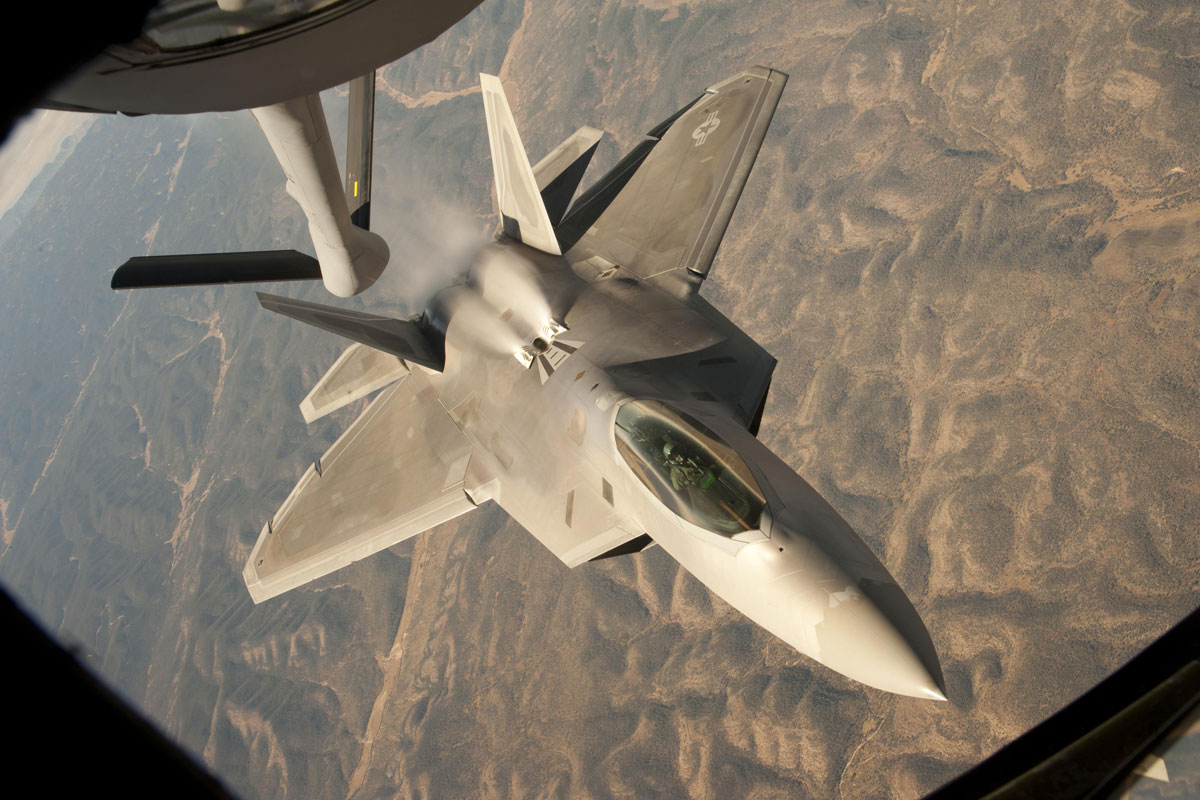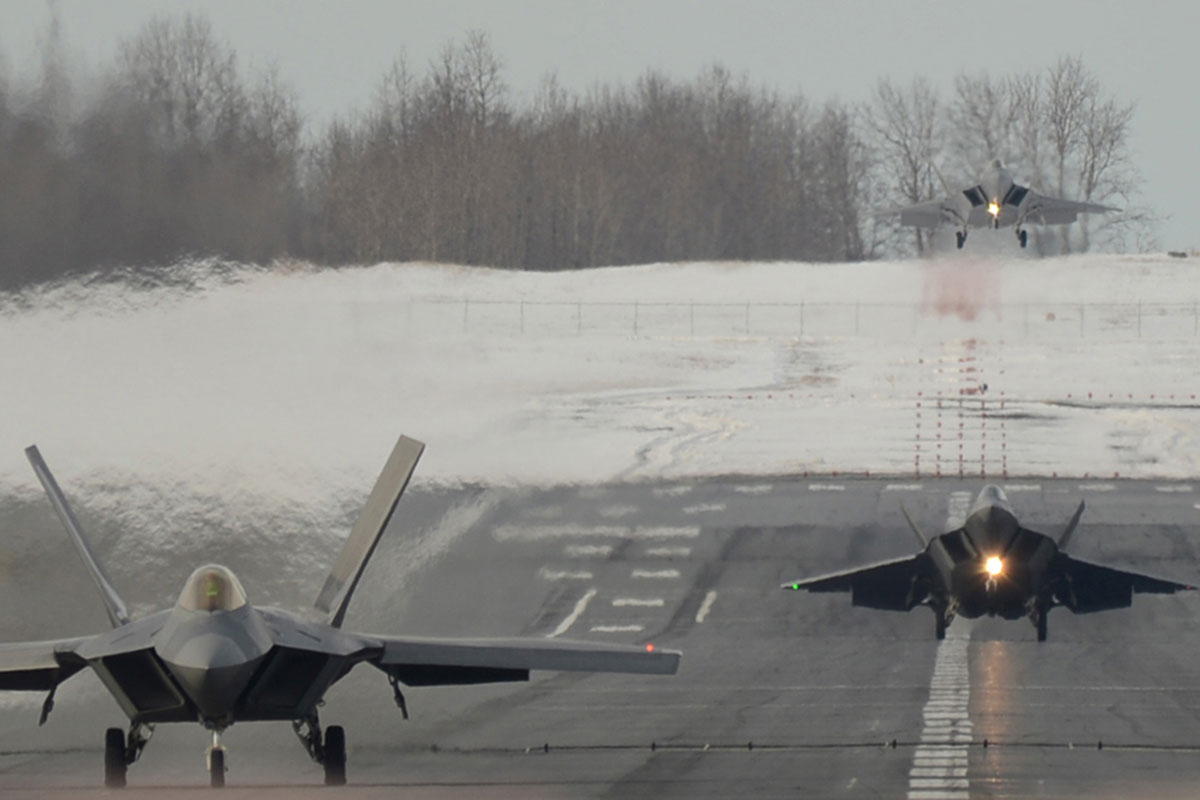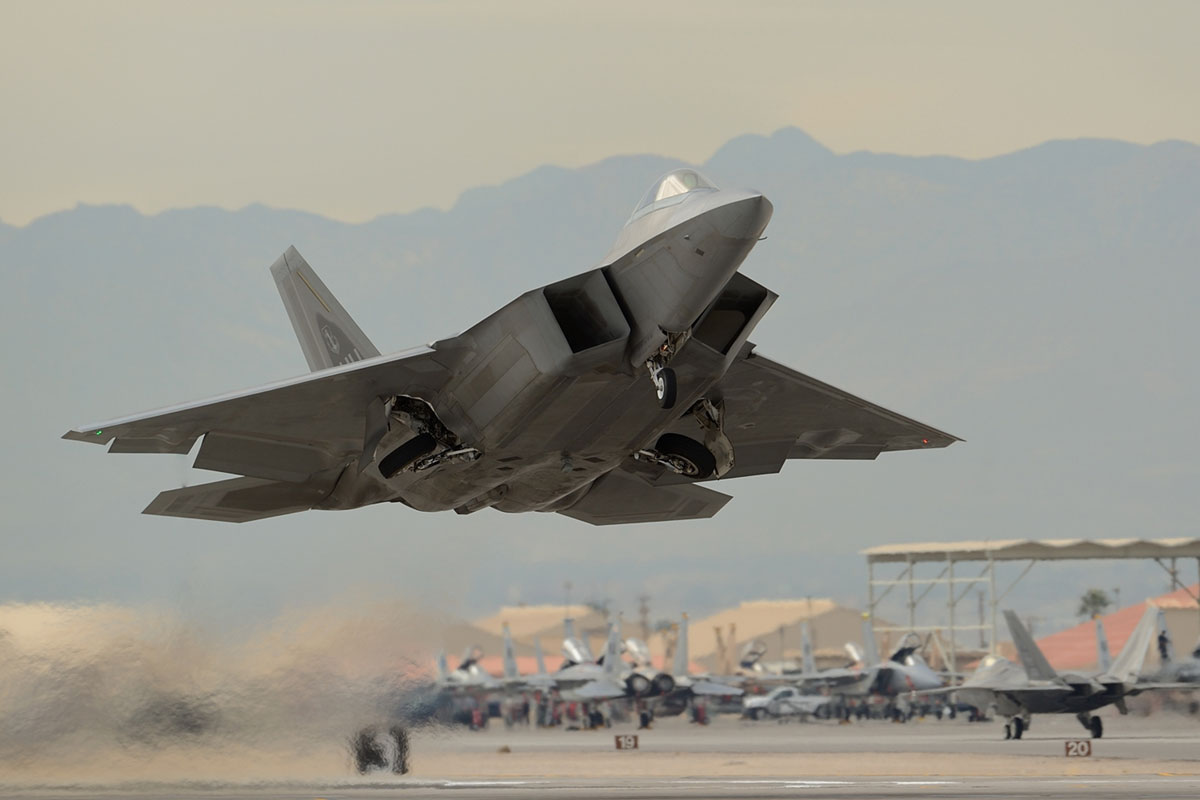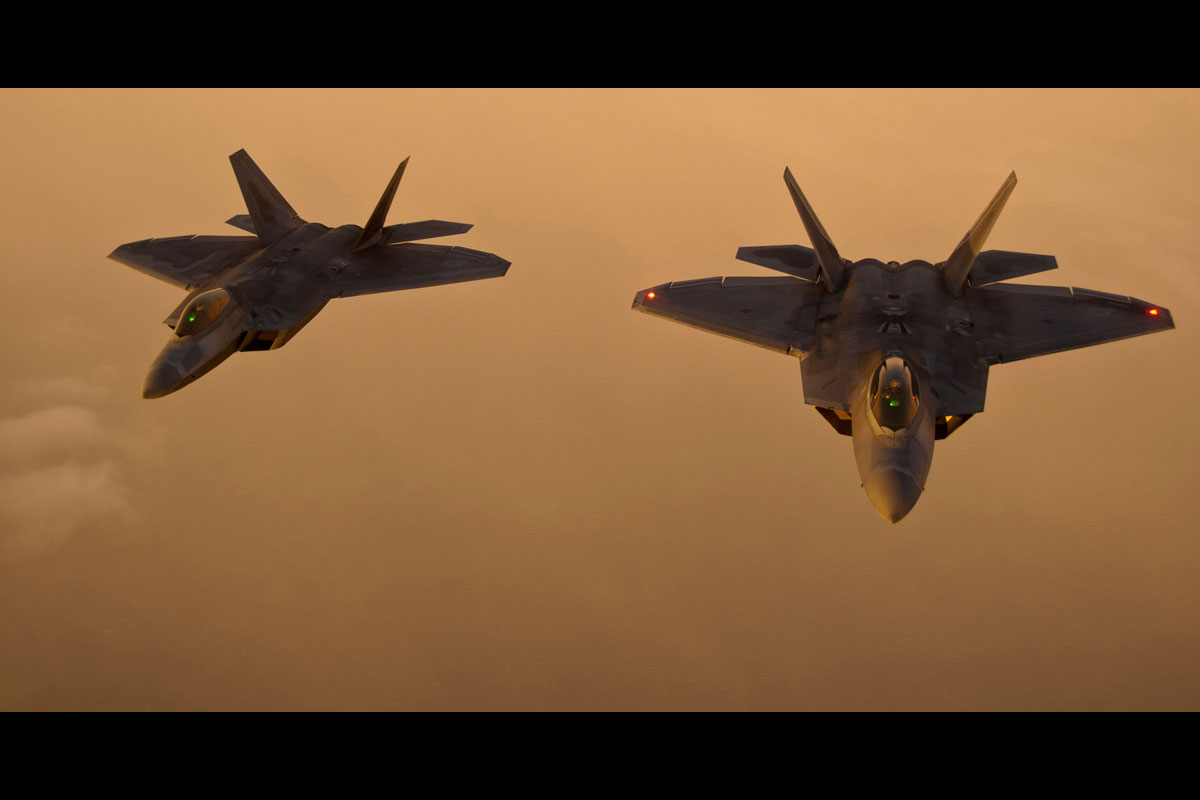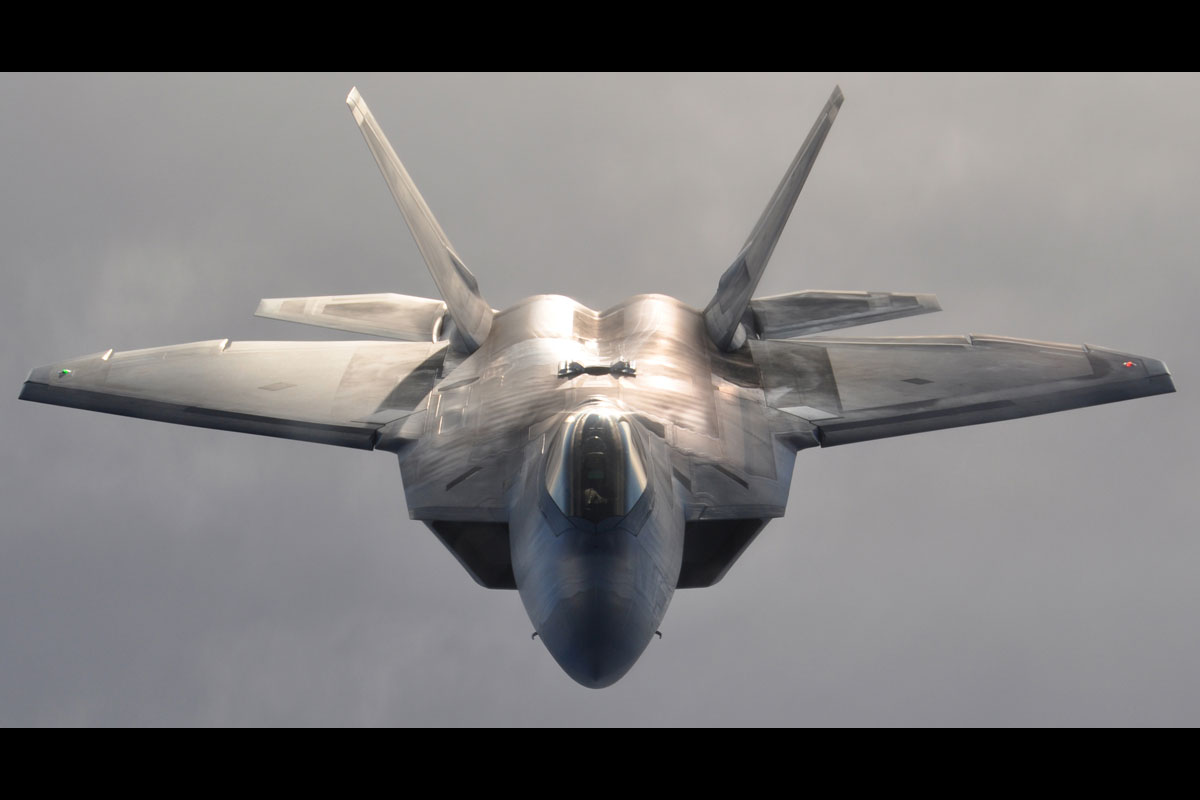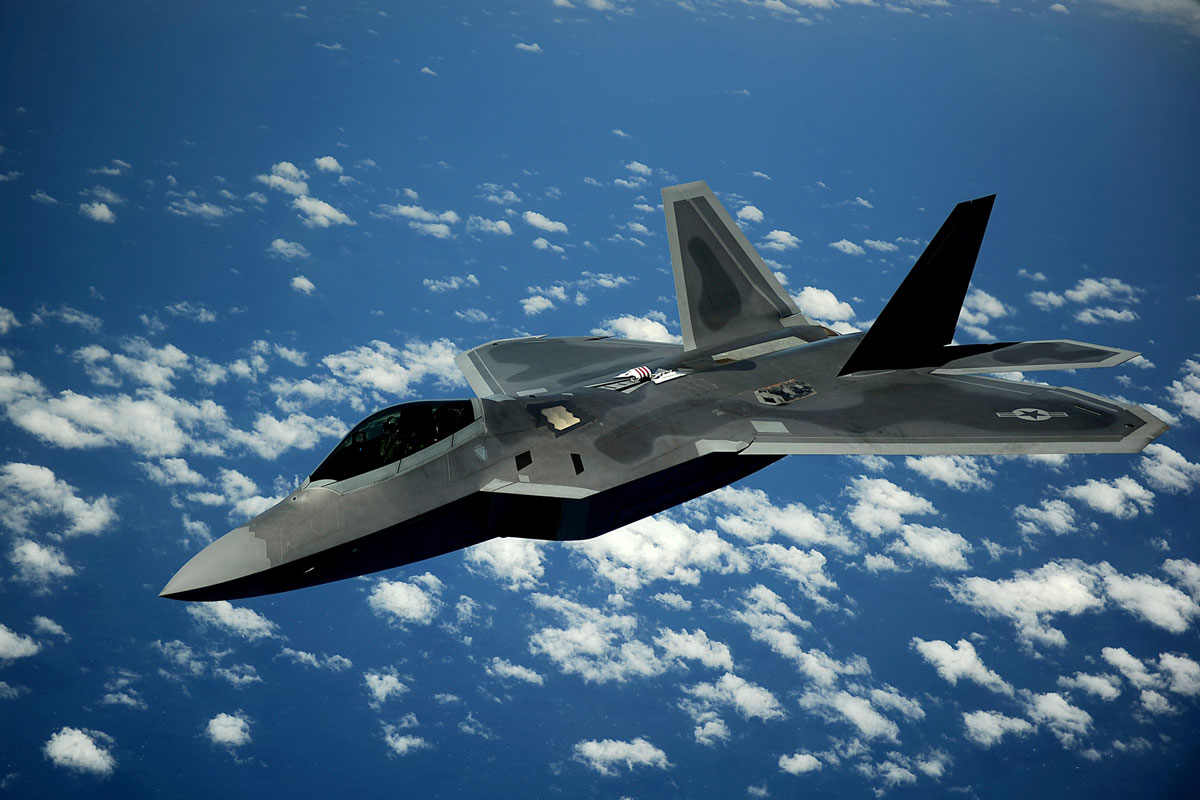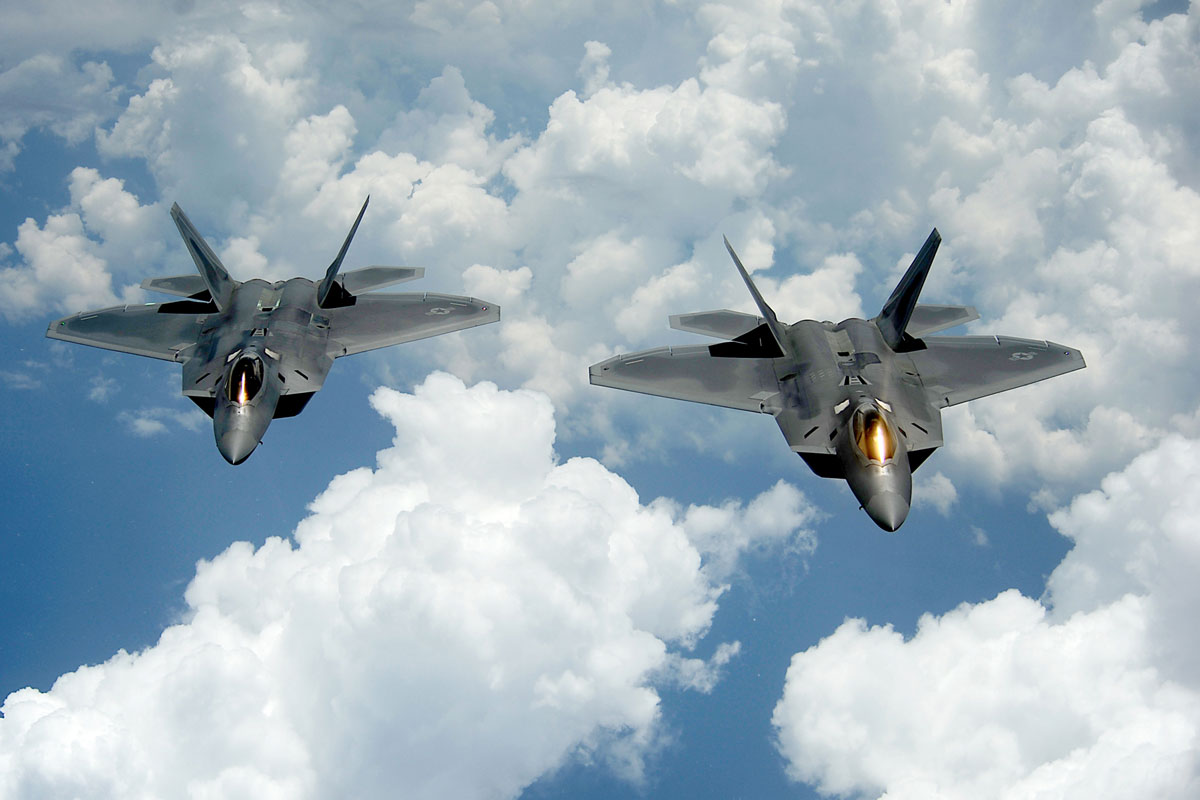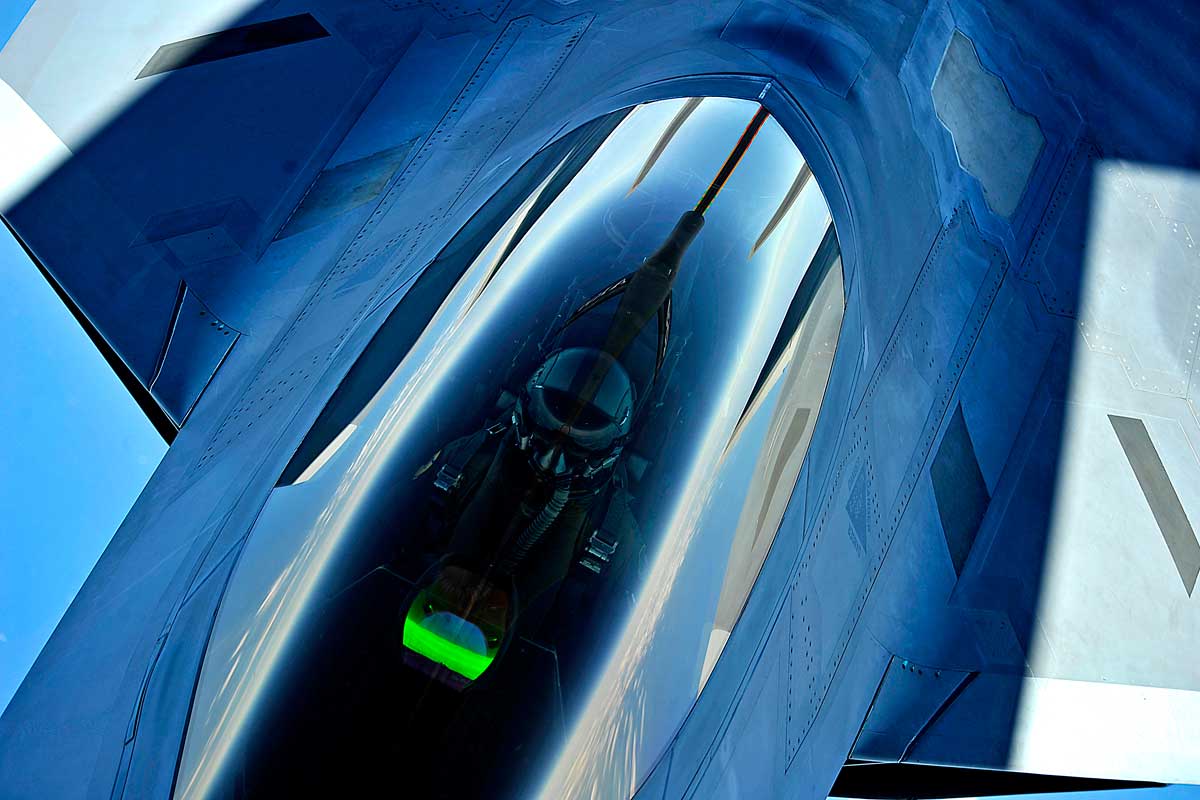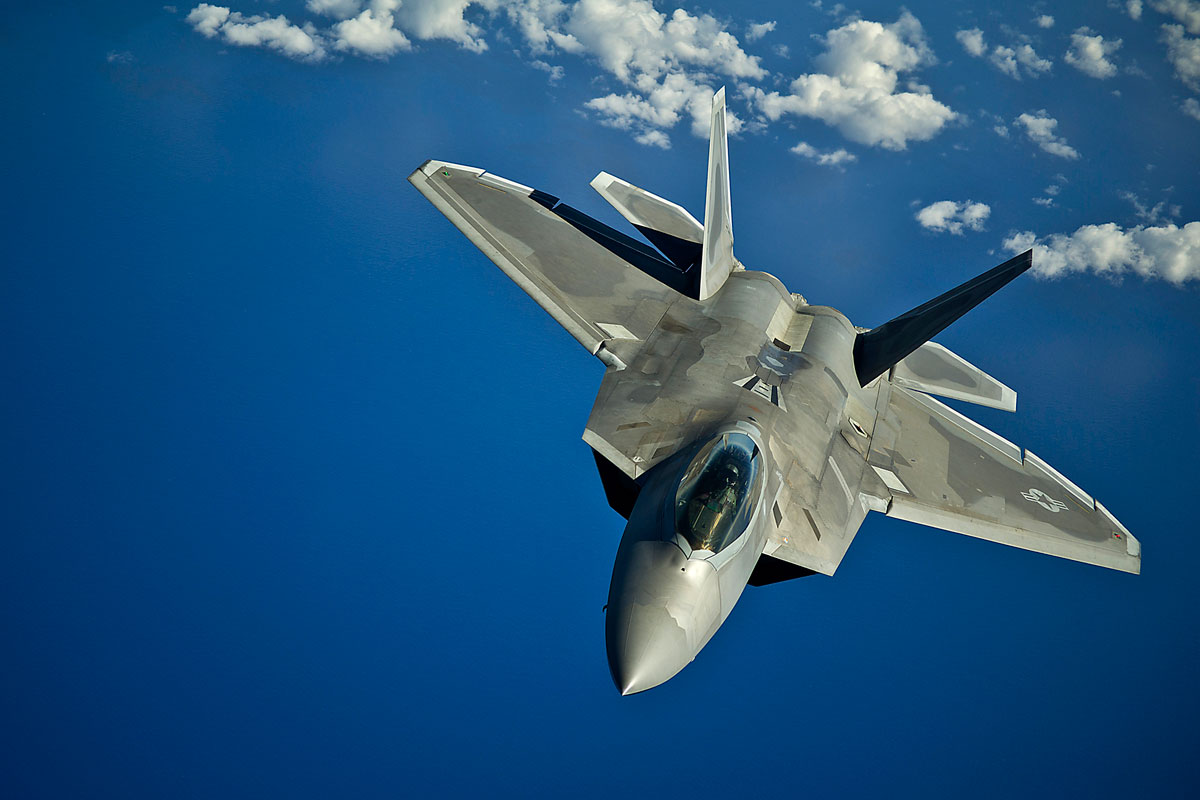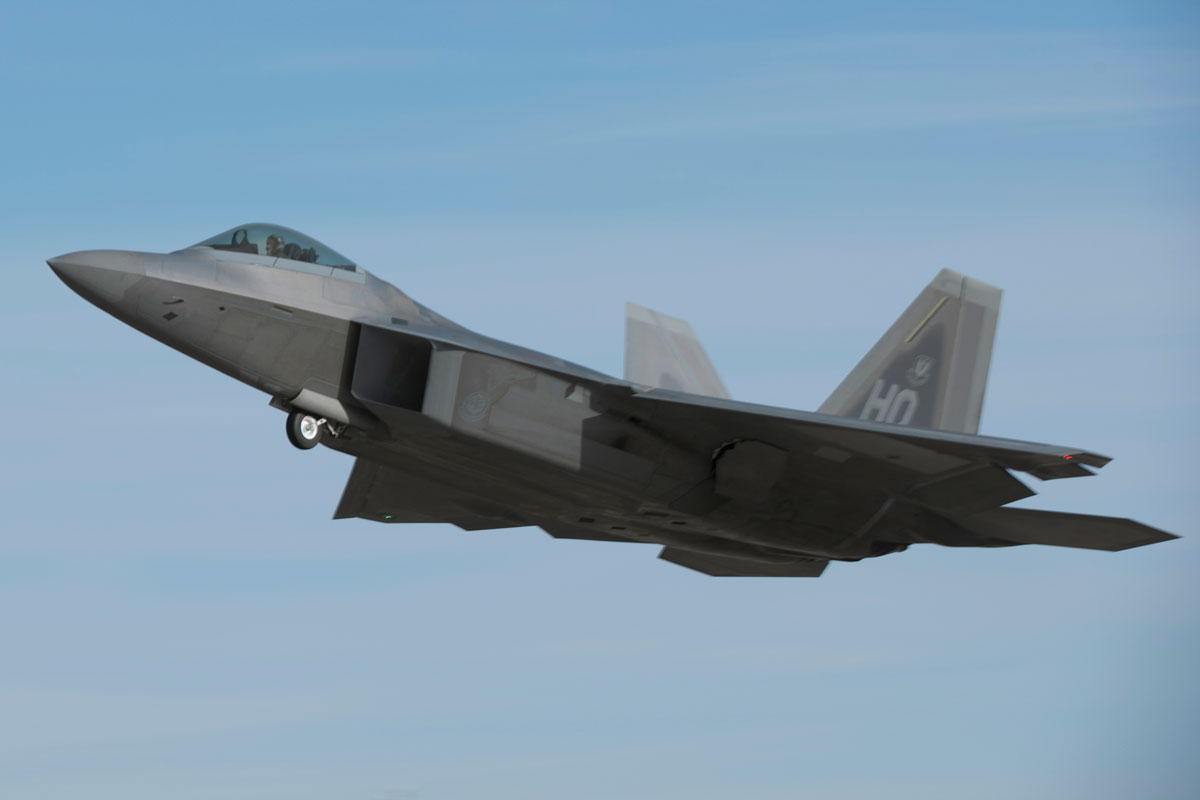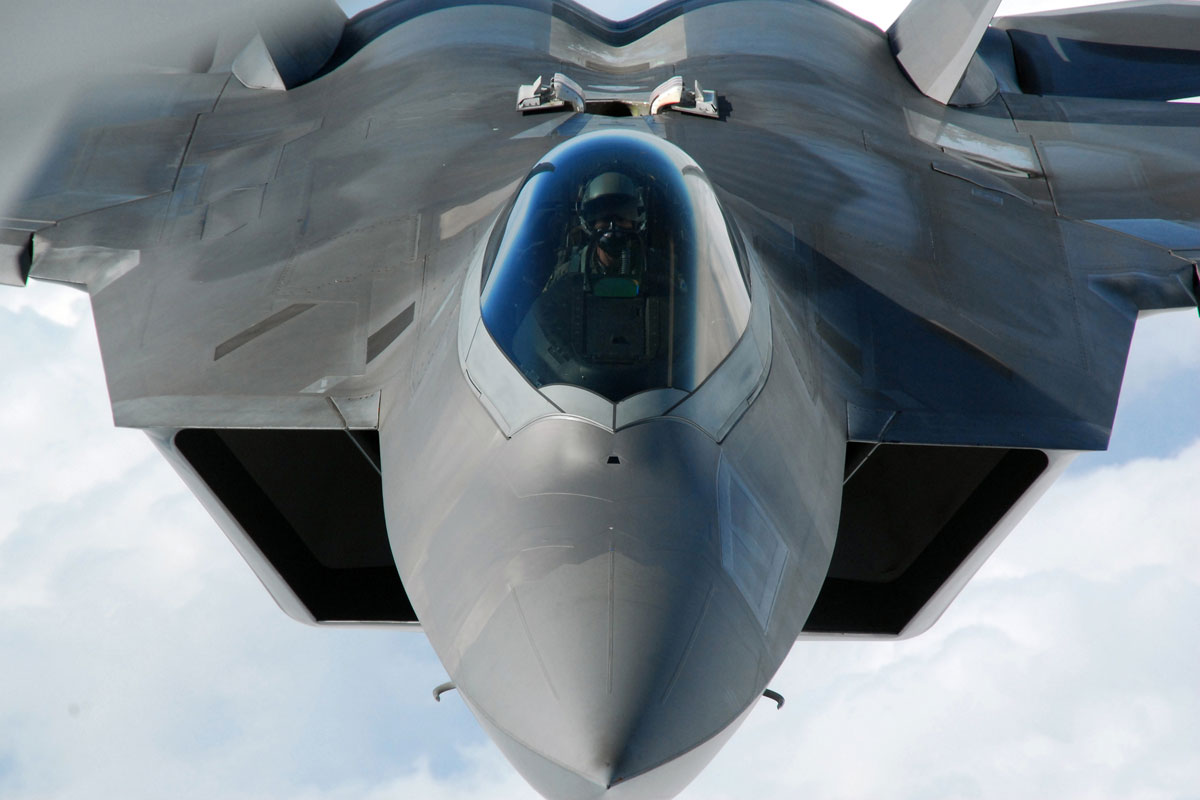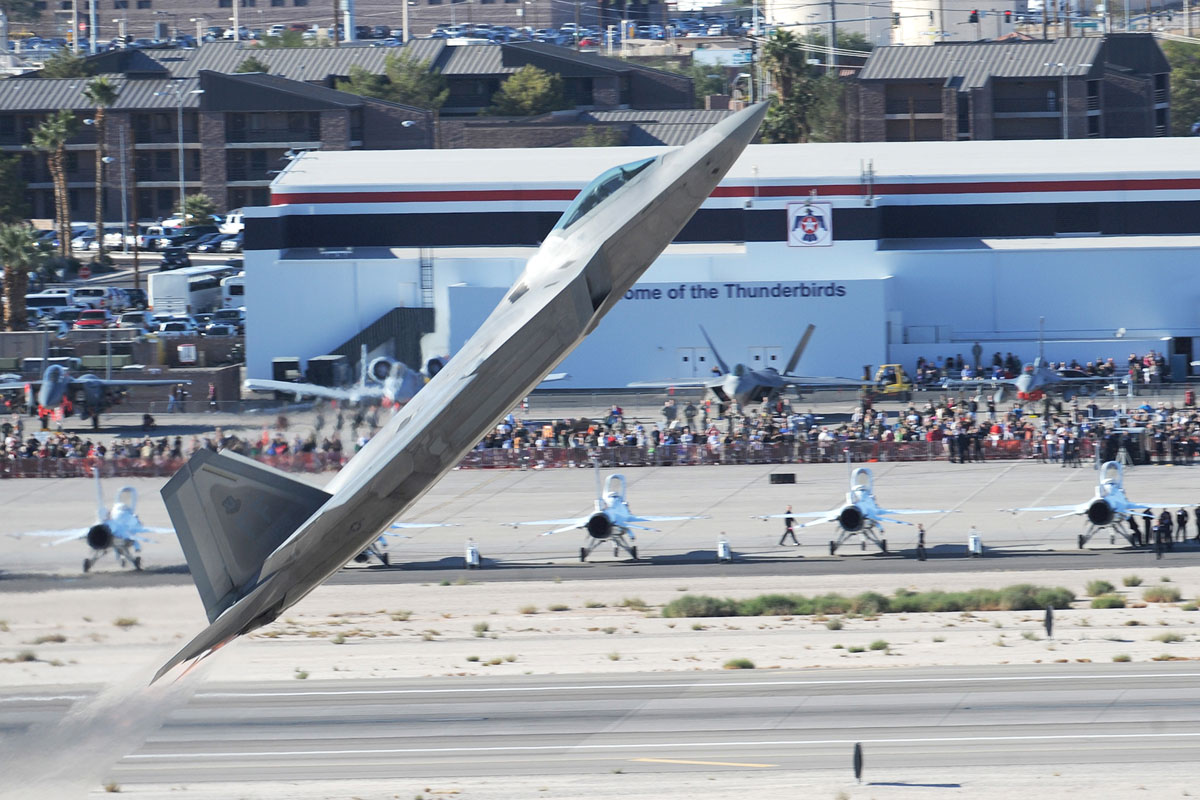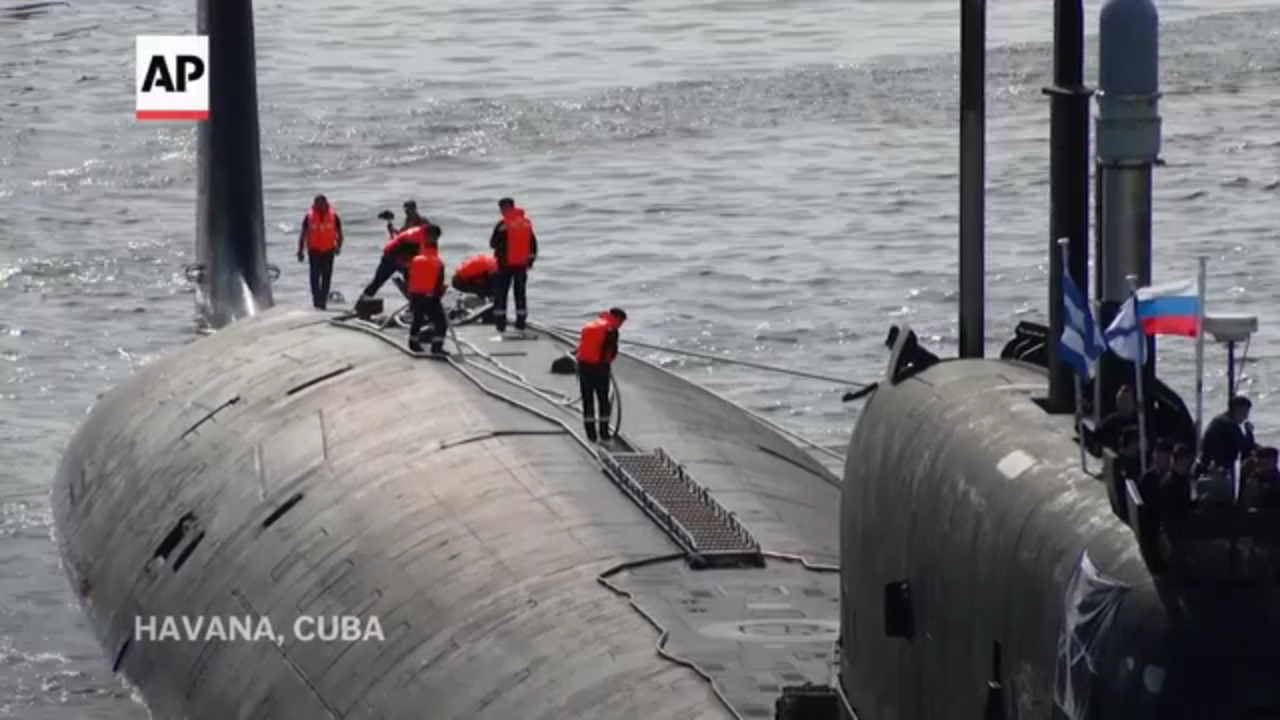The F-22 Raptor is considered the first 5th-generation fighter in the U.S. Air Force inventory, using low observable technologies, modern avionics and efficient engines to offer an air superiority fighter unmatched by any other modern military.
The F-22 Raptor, a critical component of the Global Strike Task Force, is designed to project air dominance, rapidly and at great distances and defeat threats attempting to deny access to our nation's Air Force, Army, Navy and Marine Corps. The F-22 cannot be matched by any known or projected fighter aircraft.
Related Video
Bullet Points: F22 Raptor
A combination of sensor capability, integrated avionics, situational awareness, and weapons provides first-kill opportunity against threats. The F-22 Raptor possesses a sophisticated sensor suite allowing the pilot to track, identify, shoot and kill air-to-air threats before being detected. Significant advances in cockpit design and sensor fusion improve the pilot's situational awareness. In the air-to-air configuration the Raptor carries six AIM-120 AMRAAMs and two AIM-9 Sidewinders.
The F-22 has a significant capability to attack surface targets. In the air-to-ground configuration the aircraft can carry two 1,000-pound GBU-32 Joint Direct Attack Munitions internally and will use on-board avionics for navigation and weapons delivery support. In the future air-to-ground capability will be enhanced with the addition of an upgraded radar and up to eight small diameter bombs. The Raptor will also carry two AIM-120s and two AIM-9s in the air-to-ground configuration.
Advances in low-observable technologies provide significantly improved survivability and lethality against air-to-air and surface-to-air threats. The F-22 Raptor brings stealth into the day, enabling it not only to protect itself but other assets.
The F-22 engines produce more thrust than any current fighter engine. The combination of sleek aerodynamic design and increased thrust allows the F-22 to cruise at supersonic airspeeds (greater than 1.5 Mach) without using afterburner -- a characteristic known as supercruise. Supercruise greatly expands the F-22 's operating envelope in both speed and range over current fighters, which must use fuel-consuming afterburner to operate at supersonic speeds.
The sophisticated F-22 aerodesign, advanced flight controls, thrust vectoring, and high thrust-to-weight ratio provide the capability to outmaneuver all current and projected aircraft. The F-22 Raptor design has been extensively tested and refined aerodynamically during the development process.
The F-22's characteristics provide a synergistic effect ensuring F-22A lethality against all advanced air threats. The combination of stealth, integrated avionics and supercruise drastically shrinks surface-to-air missile engagement envelopes and minimizes enemy capabilities to track and engage the F-22 . The combination of reduced observability and supercruise accentuates the advantage of surprise in a tactical environment.
The F-22 will have better reliability and maintainability than any fighter aircraft in history. Increased F-22 reliability and maintainability pays off in less manpower required to fix the aircraft and the ability to operate more efficiently.
The Advanced Tactical Fighter entered the Demonstration and Validation phase in 1986. The prototype aircraft (YF-22 and YF-23) both completed their first flights in late 1990. Ultimately the YF-22 was selected as best of the two and the engineering and manufacturing development effort began in 1991 with development contracts to Lockheed/Boeing (airframe) and Pratt & Whitney (engines). EMD included extensive subsystem and system testing as well as flight testing with nine aircraft at Edwards Air Force Base, Calif. The first EMD flight was in 1997 and at the completion of its flight test life this aircraft was used for live-fire testing.
The program received approval to enter low rate initial production in 2001. Initial operational and test evaluation by the Air Force Operational Test and Evaluation Center was successfully completed in 2004. Based on maturity of design and other factors the program received approval for full rate production in 2005. Air Education and Training Command, Air Combat Command and Pacific Air Forces are the primary Air Force organizations flying the F-22 Raptor. The aircraft designation was the F/A-22 for a short time before being renamed F-22A in December 2005.
